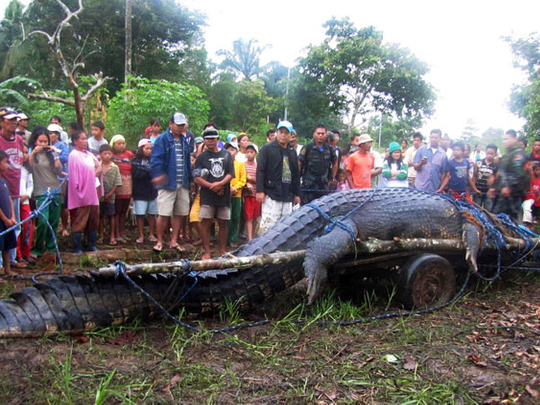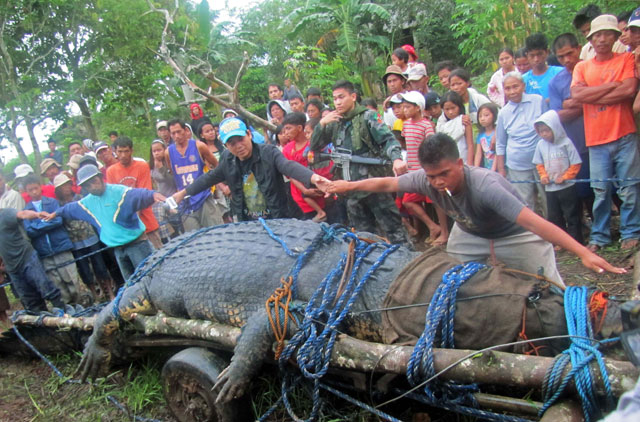
Manila: Animal rights activists are urging Philippine authorities to return a captured giant crocodile back to the wild as the creature is reported to have lost its appetite and has not eaten for at least six days.
The mayor of the town where it was caught refuses to release the crocodile, saying it poses a threat to his constituents.
The People for the Ethical Treatment of Animals (Peta) said on Saturday that the 20-foot saltwater crocodile nicknamed Lolong should be returned to its natural habitat.
It said if the beast remains in captivity it will develop abnormal and self-destructive behaviour and endanger its caretakers and visitors to a park where it is held.
Mayor Edwin Cox Elorde of Agusan del Sur province's Bunawan township said about 1,300 residents who rely on fishing in nearby marshlands could be attacked by the crocodile, believed to be the world's largest in captivity.
Ashley Fruno, senior campaigner for Peta Asia-Pacific, said natural conditions can never be replicated in zoos or animal shelters, resulting in physical and mental stress for captive animals.
"It's clear that the promoters of this park are thinking only of their bank balance, without so much as an afterthought for the animal's well-being," she said.
Elorde said he was hurt by suggestions the crocodile was captured for the financial benefit of local officials. He has announced that Lolong will be the main attraction at an eco park to attract tourists to the remote town.
"We did not capture Lolong for any commercial reasons," he said. "We captured him to save the residents in the area and to save Lolong" because villagers were planning to poison it.
Groups like Peta "are so quick in making demands without even visiting our area," he said.
Stressed
Wildlife official Ronnie Sumiller, who led the hunt for the croc nicknamed "Lolong," said on Friday that the reptile is under close observation for signs of stress since it had not eaten for days.
But he said it's normal for crocodiles to be stressed after being trapped and handled. Even in the wild, they don't normally eat daily, and a crocodile as huge as Lolong can go without food for up to six months, Sumiller told The Associated Press.
Lolong has been placed in a 800sq m pen secured by 1.22m tall concrete walls topped by welded wire in Bunawan township, where he was caught last weekend.
"We came here to take a look, because it was reported that on the first few days of his capture ... there were big crowds and some would throw stones to make him move, so we were afraid he might become stressed," said Theresa Mundita Lim, director of the government's Protected Areas and Wildlife Bureau.
She flew from the capital to southern Agusan del Sur province Friday to talk with local officials about guidelines for onlookers and to inspect the crocodile's new home 515 miles (830 kilometers) southeast of Manila.
Dead chicken
Bunawan Mayor Edwin Cox Elorde said Lolong did not budge when a dead chicken was laid nearby to whet its appetite. He said although officials tried to restrict the public viewing of the crocodile, small groups of visitors who traveled from afar pleaded to be allowed to see the reptile.
The scaly skinned Lolong - which weighs more than a ton - is estimated to be at least 50 years old. Wildlife officials were trying to confirm whether it was the largest such catch in the world, Lim said. It was captured after a three-week hunt, easing some fears among the locals.
Child killed
A child was killed two years ago in the same township by a crocodile, and a croc is suspected of killing a fisherman who has been missing since July. Last month, residents saw a crocodile killing a water buffalo.
But Sumiller said he found no human remains when he induced Lolong to vomit.
Another search was being arranged for a possibly larger croc that he and residents had spotted in the town's marshy outskirts.












